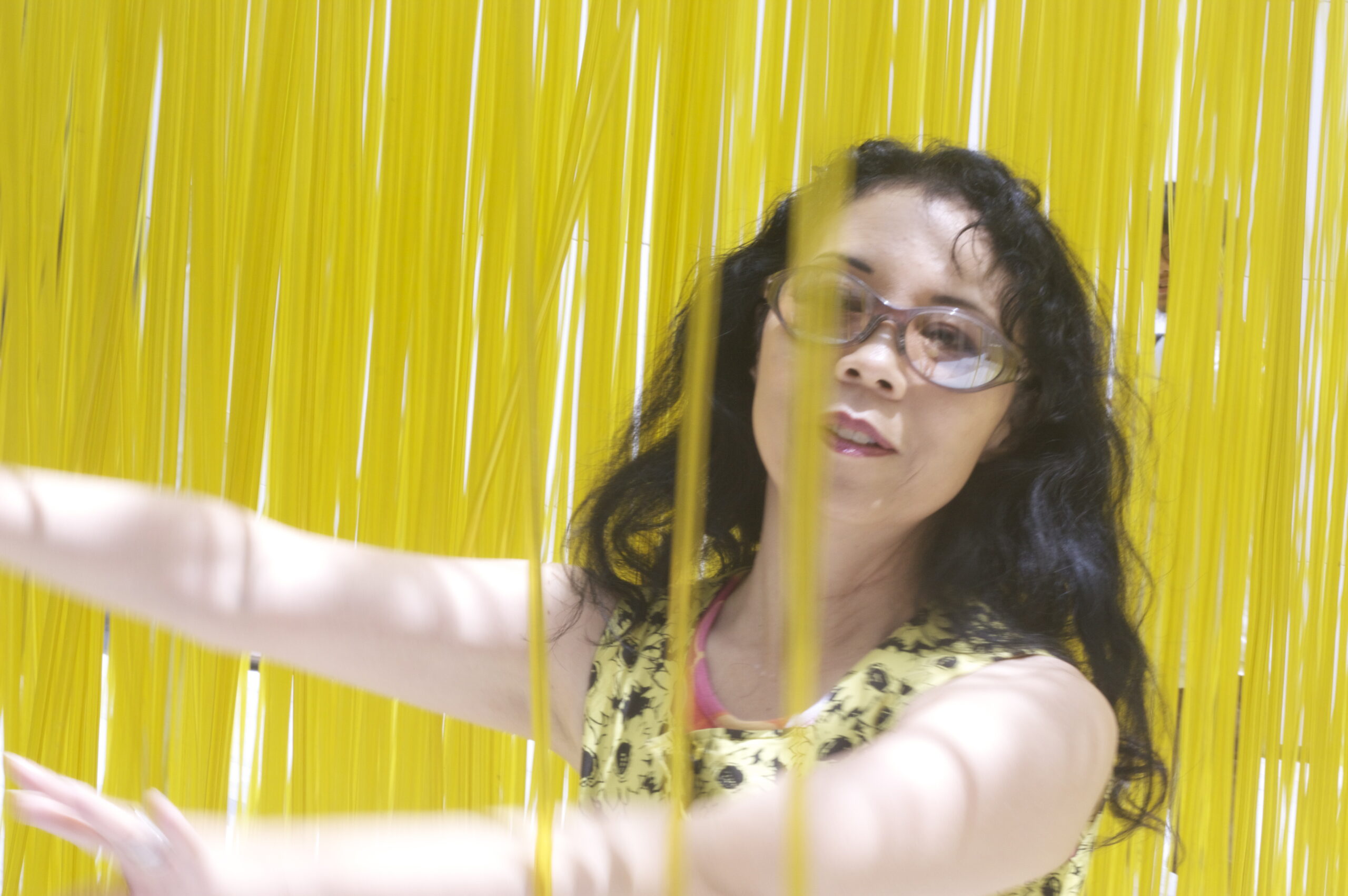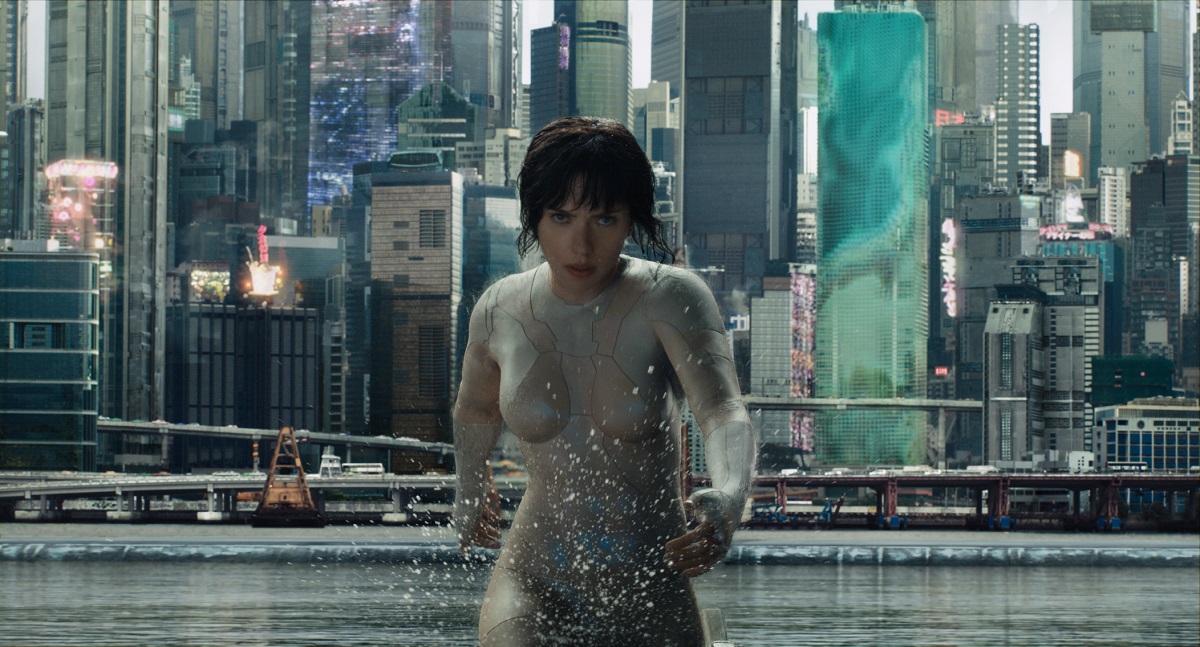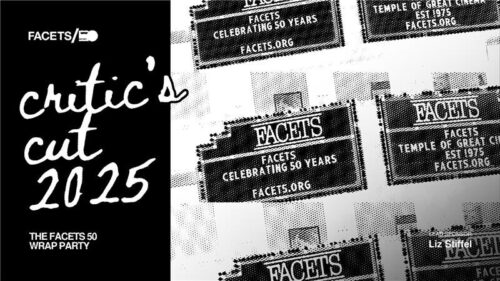Earlier this month, Paramount Pictures’ #IAmMajor campaign for “Ghost in the Shell” became a vehicle for protest among Asian Americans and opponents to the casting of the very white Scarlett Johansson. Social media charged Johansson as being “culturally insensitive” or mocking her as a feminist for “equal pay—except for Asian actresses.”
Yet the memes weren’t limited to the 2017 live-action remake of the 1995 animated feature. Comments recalled Chris Rock’s “racist Asian joke at the Oscars,” which for Asian Americans amounted to being “thrown under the bus”; Karlie Kloss in yellowface as a geisha for a recent photo in Vogue; white savior movies (mentioning the recent Matt Damon’s “The Great Wall” as an example); the casting of Jake Gyllenhaal in the 2010 “Prince of Persia”; the controversy around the new Netflix series “Marvel’s Iron Fist”; the whitewashing of the Ancient One in last year’s “Doctor Strange”; Emma Stone’s character in the 2015 “Aloha“; the whitewashing of the main protagonists in the 2008 “21”; the painful yellowface of Jim Sturgess in 2008’s “Cloud Atlas” as Hae-Joo Chang; even Mickey Rooney in the otherwise wonderful 1961 “Breakfast at Tiffany’s.”
This clear misjudgment of the Asian-American community rivals the one made in 2003 when an email was sent around to places, including UCLA, asking for attractive Asian women to be unpaid ornaments at the premiere after-party for Tom Cruise’s “The Last Samurai.” That subsequent outrage percolated via emails in a time before Twitter and Facebook.
March has really been a month of major acts of cultural appropriation of Asian culture with the premiere of “Iron Fist” on the 17th, “Power Rangers” on the 24th and “Ghost in the Shell” on the 31st.

Cultural Appropriation
According to OxfordReference.com, the phrase “cultural appropriation” is: “A term used to describe the taking over of creative or artistic forms, themes, or practices by one cultural group from another. It is in general used to describe Western appropriations of non‐Western or non‐white forms, and carries connotations of exploitation and dominance.“ The phrase brings together the Marxist notion of “class appropriation” in which “the dominant class appropriating and defining ‘high culture’ and cultural colonialism.”
In 2015, The Atlantic felt the subject important enough to publish an article: “The Dos and Don’ts of Cultural Appropriation.”
1. Blackface Is Never Okay: or “Don’t dress up as an ethnic stereotype.”
2. It’s Important to Pay Homage to Artistry and Ideas, and Acknowledge Their Origins: An example of succeeding is the exhibit “China: Through the Looking Glass” at the New York Metropolitan Museum of Art.
3. Don’t Adopt Sacred Artifacts as Accessories: (e.g. Victoria’s Secret feathered head dress on the runway with Karlie Kloss.
4. Remember That Culture Is Fluid: Japan’s fascination with denim jeans supposedly saved an industry.
5. Don’t Forget That Appropriation Is No Substitute for Diversity: Corn-rowed white models appropriating African culture against the absence of black models.
6. Engage With Other Cultures on More Than an Aesthetic Level: Rapper Nicki Minaj is quoted as saying, “Come on, you can’t want the good without the bad. If you want to enjoy our culture and our lifestyle, bond with us, dance with us, have fun with us, twerk with us, rap with us, then you should also want to know what affects us, what is bothering us, what we feel is unfair to us. You shouldn’t not want to know that.’’
7. Treat a Cultural Exchange Like Any Other Creative Collaboration—Give Credit, and Consider Royalties.
One wonders if a white artist might have been criticized for appropriating Japanese culture as Nicki Minaj did in the music video for “Your Love.” Minaj dressed up as a stereotype and it’s one that fascinated both white and blacks alike in movies like “Memoirs of a Geisha.” In a 2013 article in The Atlantic, Nolan Feeney criticized Katy Perry for her geisha-style performance at the American Music Awards for the song “Unconditionally.”
With their rise in economic and star power, blacks aren’t immune to charges of cultural appropriation. According to the extras for Marvel’s “Captain America: Civil War,” while Asian Americans are still waiting for a superhero, Captain America and Black Panther are raiding Asian traditions for their fighting styles. Choreographer John Young commented that Captain America’s fighting style was based on “old school” fighting styles like the Japanese judo, Japanese karate, Korean taekwondo and Japanese aikido. In contrast, Black Panther has a style based on Brazilian capoeira and something like Chinese kung fu. The website BlackBeltMag.com suggests that capoeira may have its roots in Chinese martial arts, citing a Chinese general in the 1400s in Angola. Angolans in Brazil developed capoeira, not in Africa. Where will one turn for fighting styles of Latin American or Asian heroes?
While in World War II we know that judo was being taught to Allied Forces (Nancy “White Mouse” Wake recalled, “They’d taught this judo-chop stuff with the flat of the hand at SOE.” Special Operations Executive was a British World War II organization), the change of fighting styles in US movies came with the growing popularity of Chinese movies and the ABC TV series “Kung Fu” (that originally aired from 1972-1975). David Carradine and not Bruce Lee played Kwai Chang Caine, a half-Chinese, half-white orphan who became a student at a monastery and ended up wandering the Wild West.
Not surprisingly, Iron Fist first appeared in 1974. The Netflix series seems stuck in David Carradine’s time. This may be 2017, but the sensibilities are from the 1970s or earlier. Besides being plagued by poor production values, the series deposits the very white Finn Jones as the protagonist, Danny Rand/Iron Fist, in the pan-Asian world of New York’s Chinatown. Jones studied Chinese kung fu, Chinese wushu and Chinese tai chi, but his character wants to teach at the dojo (a Japanese word) for Colleen Wing (an ostensibly Chinese character played by half Singaporean-Chinese actress Jessica Henwick) who practices Japanese kendo-ish moves and is called sensei (a Japanese word for teacher) by her students (instead of the Mandarin Chinese shifu or Cantonese sifu for master or the Mandarin Chinese laoshi for teacher).
The premise for “Iron Fist” is basically the same as “Doctor Strange”: white guy learns martial arts in Asia and through implied white superiority becomes a better vehicle for the powers. Dr. Strange uses mystical Tibetan mind magic while the Iron Fist’s source is extraterrestrial. After whitewashing the Ancient One in Dr. Strange, “Iron Fist” is just another bitter part of the TV “Kung Fu” legacy and not a step forward in the Marvel Cinematic Universe.

#JapanAMovie
As amusing as I found some of the recent tweets for #JapanAMovie (promoted by @midnight with Chris Hardwick), what’s not amusing is that the live-action version of “Ghost in the Shell” doesn’t really understand Japan’s culture at all.
Johansson’s “Ghost in the Shell” is inspired by Masamune Shirow’s manga and director Mamoru Oshii’s 1995 movie, but not a remake. (The original dubbed version of “Ghost in the Shell” is available on Hulu.) Watching it now is the first time I’ve heard the dialogue in English. The live-action version tries to have it both ways, having Daisuke Aramaki (Takeshi “Beat” Kitano), the chief of Section 9, speak in Japanese with little gairaigo (foreign words) while the people around him speak in English. His Section 9 task force, which includes the Major, Batou (Danish Pilou Asbæk), Togusa (Singaporean Chin Han) and Carlos Ishikawa (Fijian-Australian Lasarus Ratuere), doesn’t seem to speak Japanese at all.
The Section 9 team is racially diverse on the order of “Power Rangers” 2017—white, Asian/Latino and black. In Japan, known as the Super Sentai, the Power Rangers franchise had two movies released last year and this year with all-Japanese “rangers.” The American production Saban Entertainment turned the franchise into the American TV series by adding American actors to the storyline beginning in 1993. The Power Rangers are whitewashing of a different order: Japanese heroes whitewashed and diversified without a Japanese ranger (Johnny Yong Bosch played Korean-American Adam Park in the earlier movie, but in the current film, Chinese-Canadian Ludi Lin is Zack Taylor and Latina Becky G is Trini Kwan). In some markets, like Hawaii and parts of Asia, the original cast was shown with subtitles or dubbing. After movies like 2000’s award-winning “Crouching Tiger, Hidden Dragon” do we still need at least one white protagonist like Raymond Burr in the original English version of the first Godzilla movie or a complete whitewashing of the cast as happens in “Power Rangers”?
The Chinese characters and Japanese script (hiragana and katakana) place the live-action “Ghost in the Shell” somewhere in East Asia where Japanese is used, perhaps a modern Tokyo. The original animated movie modeled its city on Hong Kong. Yet, if you’ve ever been in a bilingual situation in Hong Kong, Japan or even the US, where one person speaks in one language and is answered in another, you’ll know that the division between languages is not so clean. Phrases slide between barriers, crossing over, even if one person has a low level of verbal fluency.
The original animated film also did not include geisha robots; that’s more in keeping with a Western fetish with the geisha. There is something creepily delightful about the geisha bots turning deadly. As a result, Section 9 must find the person who not only engineered the attack but is determined to destroy Hanka Robotics, the company that created the Major. The film also lacks subtly and makes damn sure to hammer in the meaning of the title. At least twice, maybe as many as four times.
How to Japan a movie according to Paramount’s “Ghost in the Shell”?
1. Add Chinese and Japanese script.
2. Have East Asian peripheral characters with Japanese names.
3. Have characters eat with chopsticks.
4. Add geishas (or cherry blossoms).
5. Have a character speak in Japanese.
The ending of “Ghost in the Shell” is the most convoluted justification for having two white actors play two East Asian persons (Johannson as Motoko and Michael Pitt as Kuze), perversely using technology to justify whitewashing. Is it better than the recent almost inexplicable casting of Benedict Cumberbatch as Star Trek villain Khan Noonien Singh for the 2013 “Star Trek Into Darkness”? Does this herald a new justification for Caucasians playing Asians?
The live-action “Ghost in the Shell” begins with the sentiment that “the line between humans and machines is disappearing,” but the animated feature’s beginning title card states: “In the near future: Corporate networks reach out to the stars, electrons and light flow throughout the universe. The advance of computerization, however, has not yet wiped out nations and ethnic groups.” Hollywood continues to wipe out some ethnic groups. Neither the ending of “Ghost in the Shell” nor the Netflix offering of “Iron Fist” is likely to silence the Asian-American outrage on social media.












